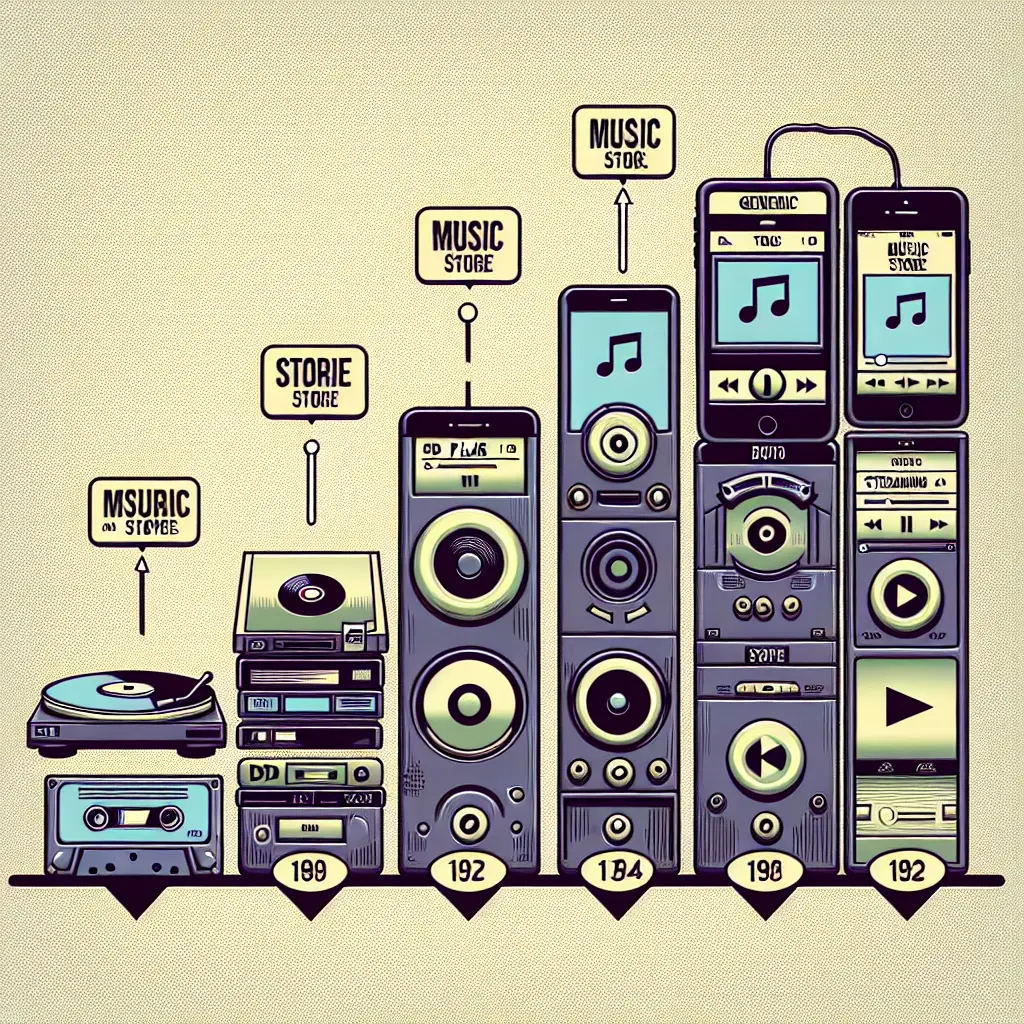The evolution of Apple iTunes is as intriguing as the company itself. From its inception in 2001 as a humble media player, iTunes has morphed into a comprehensive platform for managing, playing, and purchasing multimedia content. Its exciting journey, frequently interwoven with both praise and criticism, reflects the efforts Apple has made to redefine how we perceive and treat multimedia content.
Developed by Bill Kincaid under the alias Robbin, iTunes’ journey began with SoundJam MP, a digital audio player app. Apple purchased this program in 2000, and integrated it with their product catalogue, rebranding it as iTunes. Early versions were built to manage music files on Apple’s iPod media player. Steve Jobs announced iTunes 1.0 at the Macworld Expo in January 2001, depicting it an “unbelievably great jukebox software.”
The 2001 version iTunes was available to Mac Users only. It allowed users to rip songs from CDs, create playlists, and burn CDs – a move positioning Apple as a leading figure in digital music distribution. iTunes introduced a fresh perspective to technology, shifting focus from pirated music downloads towards a justifiable system for purchasing song tracks and albums.
The announcement of iTunes’ second version in 2002, integrated with the iPod, marked a pivotal turning point in its evolution. The enhanced iPod compatibility allowed music management right from the pocket, making music portable. By then, iTunes was compatible with both MacOS and Windows operating systems, thus expanding its user base.
The inflection point in iTunes’ timeline arrived with iTunes Store in 2003. The iTunes Music Store, launched with a 200,000-song catalogue, became the standard for legal music downloads. By adding videos in 2005 and games in 2006, the iTunes Store became an entertainment hub. By virtually eliminating constraints like geographical boundaries, it changed the way people bought and enjoyed media.
iTunes’ 2007 version debuted along with the first-ever iPhone. This integration nudged iTunes from merely a music player to a multi-dimensional platform, synchronizing and creating backups for the iPhone. As Apple added more apps and services, iTunes quickly became the iPhone’s command center.
Apple’s introduction of iTunes U in 2007 promoted Apple’s commitment to education. Universities could configure courses, letting students download lectures, videos, and other educational material via iTunes. Artists and publishers, too, benefited through iTunes, promoting their work on a global platform.
Then came iCloud in 2011, Apple’s cloud storage and computing service. iCloud’s integration with iTunes suggested a significant shift from locally stored music and data to cloud-computing-based storage. This enactment of iTunes in the Cloud meant users could now access their purchased media from any Apple device.
In 2013, Apple introduced radio-style streaming into iTunes with iTunes Radio. The ad-supported music streaming service offered curated playlists and stations. However, in 2015, iTunes Radio was absorbed into Apple Music, Apple’s new streaming service, offering a paint box of features such as tons of tracks, twenty-four-hour radio stations named “Beats 1,” curated playlists, and personalized music recommendations.
iTunes came under criticism during this time for its overburdened functionality. Many users found it difficult to navigate through a myriad of features that had mushroomed out of the original, simple media player concept. Nonetheless, Apple continued to develop and update iTunes, introducing fresh ideas and concepts that kept the platform interesting and relevant.
iTunes 12.7 in 2017 saw a return to its roots, as Apple removed the App Store from iTunes. This step marked the simplification phase of iTunes, leading to Media Player’s creation- a standalone app for syncing and backing up devices.
The final twist in iTunes’ narrative came in 2019 with the arrival of MacOS Catalina. The introduction of separate apps for Music, TV, and Podcasts replaced iTunes on Mac, effectively ending the iTunes era. On Windows, however, iTunes continues to exist in its current form.
The iTunes journey, which started merely as a digital jukebox, has evolved into a multi-functional platform for media consumption, ed-tech, purchasing, and synchronization. From changing the way music is distributed and purchased to paving the way for streaming services like Spotify, the influence of iTunes on modern media cannot be overemphasized. Despite criticism for its crowded functionality, iTunes’ evolution mirrors the trajectory of the digital media landscape itself, offering a glimpse into the past, present, and the future of digital entertainment.
SEO Keywords: Apple iTunes, Evolution of iTunes, iTunes Store, iTunes Music, Digital Media, Apple Music, iTunes U, iCloud, iTunes Radio, Media Platform.
Share this content:

